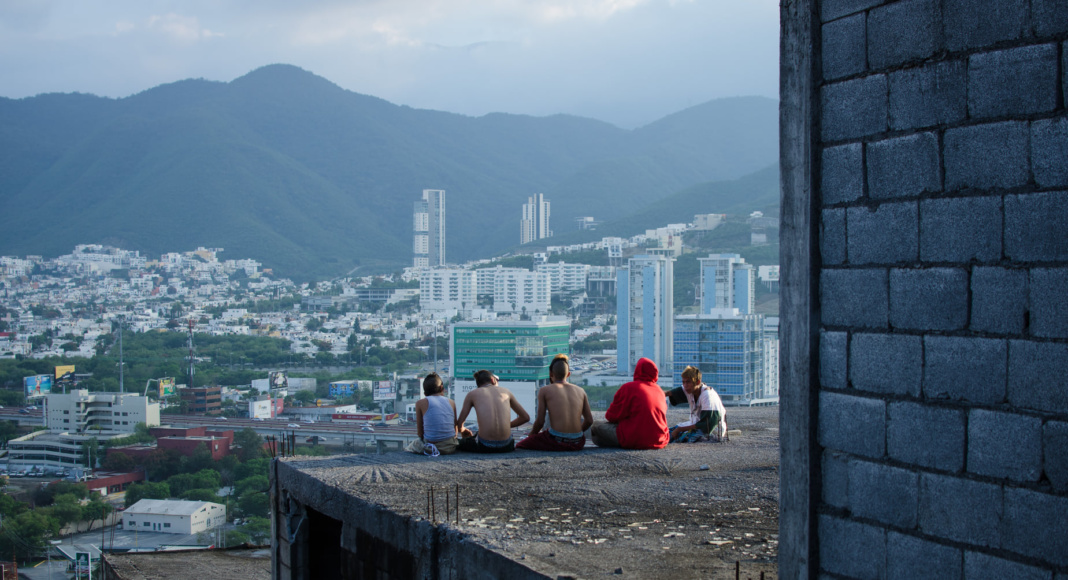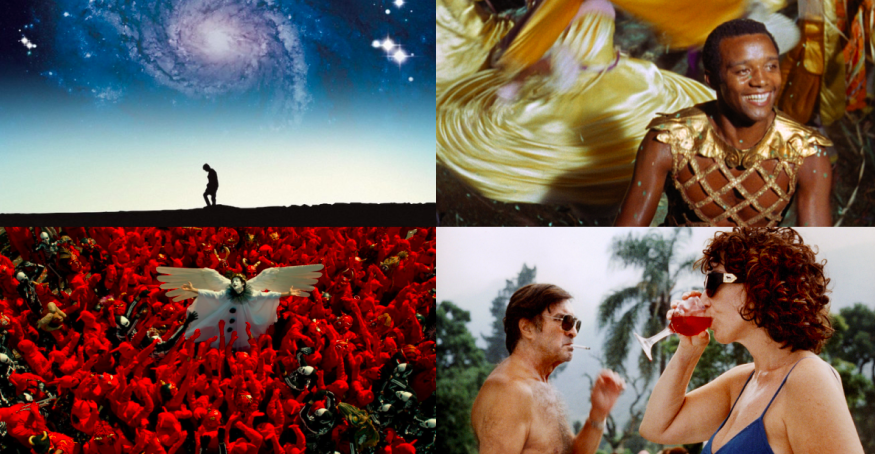I’m No Longer Here by Fernando Frías de la Parra is the latest Mexican film to be spotlighted to win an Oscar this year. Its presentation of Monterrey’s cholombiano culture, gang violence and the struggles of forced migration have led to it being shortlisted in the Best International Feature category and seeing a successful festival run before being widely released on Netflix. Here, Rafael Zafra asks what happened to the cholombianos, the urban tribe portrayed in the film.
The endless spiral of violence in today’s Mexico began when right-ring president Felipe Calderón (2006-2012) launched his War on Drugs. It is at the start of that convulsive moment in Mexican history that I’m No Longer Here takes place.
Ulises (Juan D. García Treviño), the taciturn leader of his small group of friends in the outskirts of Monterrey in northern Mexico, is forced to flee across the US border due to death threats against him. In New York City, he meets Lin (Xueming Angelina Chen), a second-generation migrant of Chinese descent. The film moves along the two timelines in Ulises’ journey of escaping the social decomposition that altered his life in Monterrey, where most of his time was spent with his clique of dance enthusiasts, Los Terkos (the stubborn ones). But his journey is also one of settling into his new life as a migrant in New York City, where even fellow Mexicans cannot relate to his eccentricity.
As Ulises struggles to adapt to his new life, he’s afflicted by the absence of his friends and, most importantly, his music. Lin’s interest in Ulises is fuelled as much as anything by his appearance – he wears a punky bleached-blond mullet with long gelled sideburns and bright, baggy clothing.
Ulises’ subculture, the cholombianos, are a distinctive youth subculture only found in the working class suburbs of Monterrey in northern Mexico. Their name is a hybrid of cholo style – another subculture of predominantly Mexican migrants in Los Angeles who wear baggy trousers, baseball jerseys and bandanas tied around the head, and colombianos – because of their music taste and love of dancing to cumbia rebajada, wistful Colombian cumbias slowed-down “to make it last longer”, as Ulises romantically puts it. They dance to cumbia with expressive spins and hand gestures and low, short steps. Historians suggest the style may have come from enslaved Afro-Colombians dancing in shackles, with limited motion.
There are many theories about the origins of cholombianos: some say Colombian immigrants in America brought their music with them when they visited Monterrey; others that locals adopted an appreciation of cumbia after hearing it played by the city’s Colombian population. The truth is that cumbia gained a firm foothold in Monterrey and this movement created a whole new cultural expression of its own, that consolidated singers like Celso Piña, a pioneer of cumbia rebajada. (Watch La Kolombia Regia, a 13 minute documentary, if you want to know more.)
Cholombianos had risen to wide recognition in large measure because of their hairstyles and fashion, however they became more popular thanks to a 2011 Vice article. Vice documented their lives, describing them as a mix between Los Angeles- and Chicago-based cholos and a romantic idea of Latino cumbia dancers from Colombia. A 2015 photography exhibition by British fashion designer and photographer, Amanda Watkins, later presented their fashion in living colour. Watkins, who lived in Monterrey in 2007, documented the real life of this subculture and exhibited her photos at Rich Mix in London.

However, despite drawing interest from around the world, cholombiano culture (also known as kolombia culture) essentially disappeared from Monterrey after 2010 because of the destruction of organised crime during the major unrest of Calderón’s presidency in the late 2000s and early 2010s.
The very same architects of the Mexican War on Drugs exploited their connections with drug cartels, leading youth like Ulises to be made vulnerable by the resulting turf wars, on top of discrimination from security forces and in public opinion. Resulting from this repression and a need to ‘lay low’ in a violent climate, cholombiano culture phased out after a decade.
Cumbia can still be heard in the hills around Monterrey, but the subculture is barely visible today. I’m No Longer Here is an invitation back into the 2010s, when Monterrey’s suburbs still danced to cumbia, but when Mexican youth were particularly hit by the war on drug cartels; a war that led to further social exclusion, intensified gang violence and decomposition of the social fabric.
For further reference to cholombianos in popular culture, Cumbia Callejera (2009) is a Mexican film from which Frías took some inspiration. For some cumbia rebajada, the music danced to by Ulises and his gang Los Terkos, Celso Piña has the greatest tunes. I’m No Longer Here is streaming now on Netflix UK.


